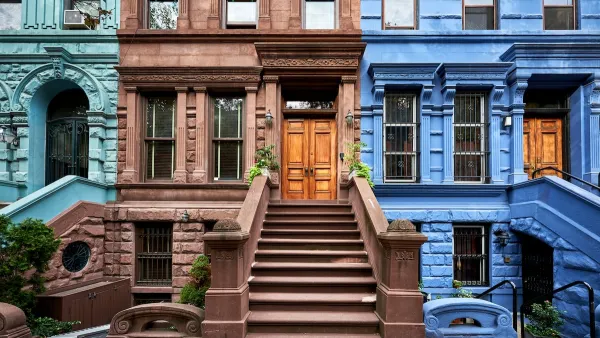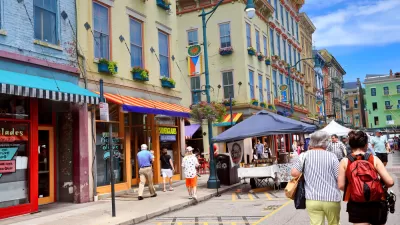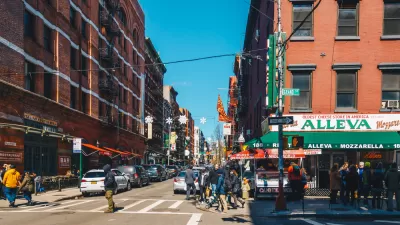Associate professor of design Karen Monzel Hughes, in moving from Cincinnati's much-acclaimed Mariemont to the once-struggling Over-the-Rhine, discovers that rebuilding and preserving are both critical facets of preservation.
"I have lived most of my life in urban environments that provide experience with two distinct types of preservation," writes Karen Monzel Hughes. "Distinguishing between the two and recognizing the difference is important."
She moved to Cincinnati's re-emerging Over-the-Rhine area seven months ago, after spending 25 years in Mariemont, a John Nolen-designed community just outside downtown Cincinnati that served as a historical precedent for New Urbanism. Monzel Hughes notes that, "[l]iving in a community that clearly values its heritage and the benefits of an intelligently planned town instilled in me an appreciation for the preservation of the buildings as well as the overarching vision of community, the benefits of walkability, and centrality of place. Mariemont is, and always has been, a community with a clear continuity of purpose."
"In contrast to Mariemont, preservation in Over-the-Rhine takes on a different urgency and faces many other obstacles," says Monzel Hughes. "The opportunity for maintaining its rich historic buildings and urban fabric has long since disappeared. The expense of rehabilitating crumbling buildings can be a roadblock to investment just as the poverty and crime that had overridden the area are deterrents to creating sustainable community. However, Cincinnati has taken an approach that is showing rapid and highly successful results."
Thanks to Simmons Buntin
FULL STORY: Rebuilding and Preserving: Two Aspects of Preservation

Maui's Vacation Rental Debate Turns Ugly
Verbal attacks, misinformation campaigns and fistfights plague a high-stakes debate to convert thousands of vacation rentals into long-term housing.

Planetizen Federal Action Tracker
A weekly monitor of how Trump’s orders and actions are impacting planners and planning in America.

San Francisco Suspends Traffic Calming Amidst Record Deaths
Citing “a challenging fiscal landscape,” the city will cease the program on the heels of 42 traffic deaths, including 24 pedestrians.

Defunct Pittsburgh Power Plant to Become Residential Tower
A decommissioned steam heat plant will be redeveloped into almost 100 affordable housing units.

Trump Prompts Restructuring of Transportation Research Board in “Unprecedented Overreach”
The TRB has eliminated more than half of its committees including those focused on climate, equity, and cities.

Amtrak Rolls Out New Orleans to Alabama “Mardi Gras” Train
The new service will operate morning and evening departures between Mobile and New Orleans.
Urban Design for Planners 1: Software Tools
This six-course series explores essential urban design concepts using open source software and equips planners with the tools they need to participate fully in the urban design process.
Planning for Universal Design
Learn the tools for implementing Universal Design in planning regulations.
Heyer Gruel & Associates PA
JM Goldson LLC
Custer County Colorado
City of Camden Redevelopment Agency
City of Astoria
Transportation Research & Education Center (TREC) at Portland State University
Jefferson Parish Government
Camden Redevelopment Agency
City of Claremont





























